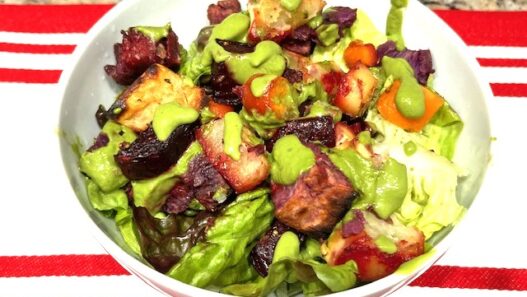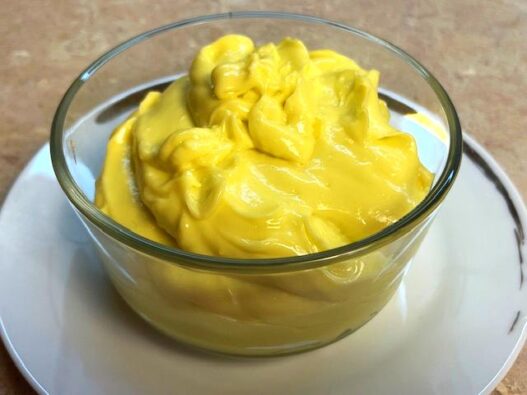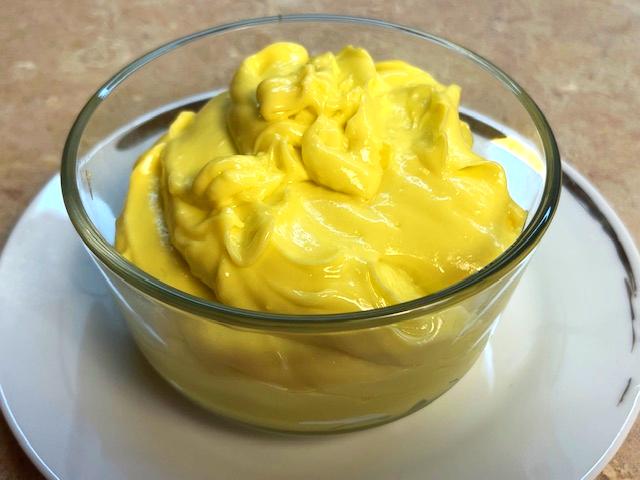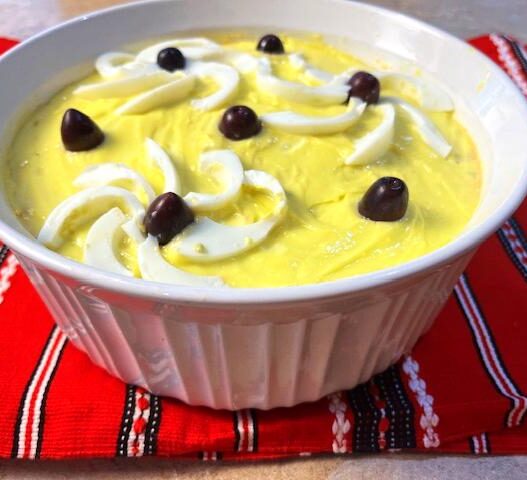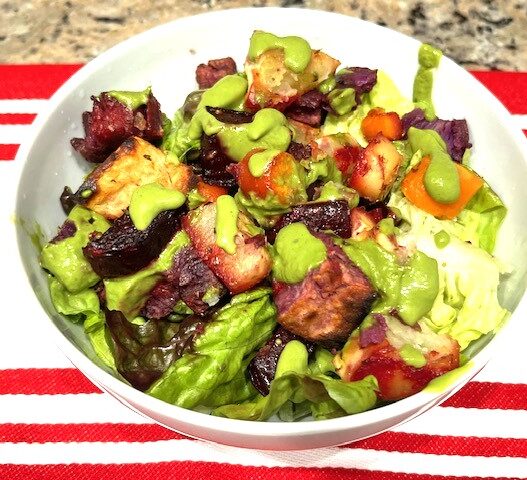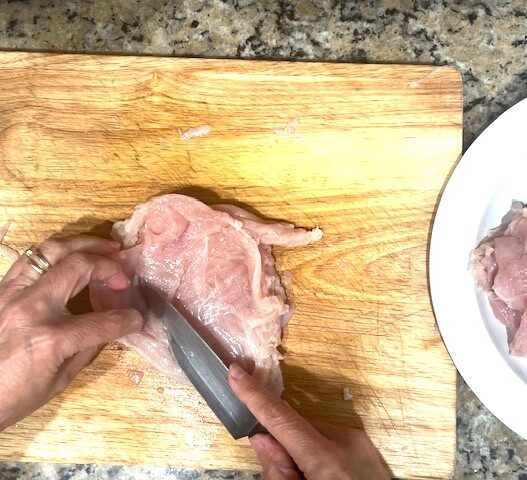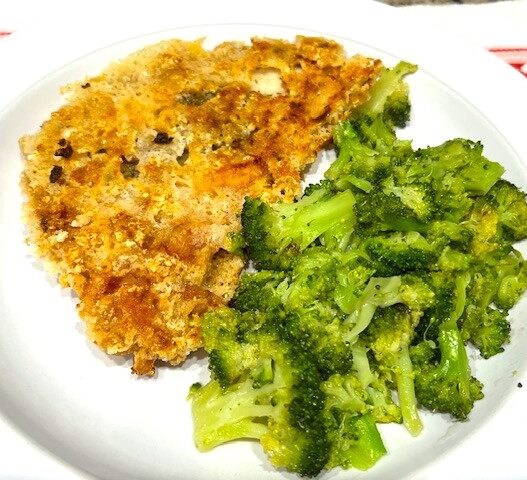Creamy Homemade Mayonnaise: Gluten-free, Dairy-free
Homemade Mayonnaise is a kitchen staple that’s surprisingly easy to make. This creamy, versatile condiment can elevate everything from sandwiches to salads. By combining boiled and raw yolks, you get a perfect balance of texture and flavor. If you’ve never made mayonnaise from scratch before, this recipe will guide you through every step, ensuring success and a delicious outcome.
Why Use Boiled Yolks?
Using boiled yolks in your mayonnaise recipe adds a unique twist that enhances both texture and stability. Here’s how they impact the final product:
Boiled Yolks for Thickness: Boiled yolks contribute to a denser, more structured mayonnaise. They help create a rich and luxurious texture that’s perfect for spreading on sandwiches or using as a base for dips. The cooked yolks also add a subtle depth of flavor that complements the raw yolk.
Smoothness with Raw Yolks: The raw yolk is essential for creating the silky smoothness that mayonnaise is known for. It plays a key role in emulsification, binding the oil and water components together seamlessly. This ensures that the mayonnaise doesn’t separate and maintains its creamy consistency.
1 Boiled vs. 2 Boiled Yolks: Using 1 boiled yolk results in a lighter mayonnaise that’s slightly less dense. This version is ideal for those who prefer a more traditional texture. On the other hand, incorporating 2 boiled yolks makes the mayonnaise thicker and richer, giving it a heartier feel. This sturdier version is excellent for recipes where you need the mayonnaise to hold its shape, such as potato salads or deviled eggs.
Homemade Mayonnaise Ingredients
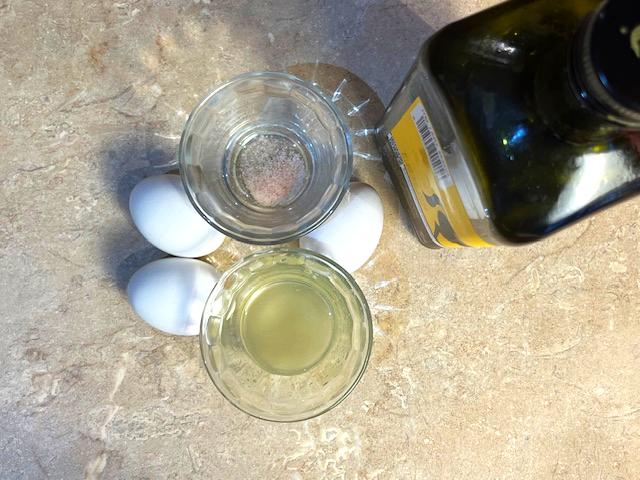
To make a small batch of mayonnaise you’ll need the following ingredients:
2 boiled egg yolks (hard-boiled and peeled, cooled to room temperature)
1 raw egg yolk (room temperature for better emulsification)
1 tablespoon fresh lemon juice (adjust to taste for tanginess)
1/4 teaspoon sea salt (or more, depending on your preference)
3/4 cup avocado oil (you can also use light olive oil for a milder flavor)
These simple ingredients come together to create a rich and creamy mayonnaise that’s far superior to store-bought versions.
Instructions
Prepare Your Ingredients: Begin by mashing the boiled yolks with a fork until they form a smooth paste. Alternatively, you can place them in a food processor to achieve a consistent texture. Add the raw egg yolk, lemon juice, and salt to the mixture. Blend or whisk thoroughly until the ingredients are well combined and smooth. This step ensures that the boiled yolks integrate seamlessly with the raw yolk.
Start Emulsifying: With the base prepared, it’s time to emulsify the mayonnaise. While blending or whisking, add the oil very slowly, starting with just a few drops. This slow addition is crucial at the beginning, as it allows the oil to incorporate properly with the yolk mixture, forming the foundation of the emulsion.
Gradually Add More Oil: As the mixture begins to thicken and emulsify, you can increase the speed at which you add the oil. Pour it in a thin, steady stream while continuing to blend or whisk. This gradual process ensures that the mayonnaise remains smooth and creamy without separating.
Adjust the Consistency: Once all the oil has been added, assess the thickness of your mayonnaise. If it’s thicker than you’d like, add water or more lemon juice, one teaspoon at a time, blending after each addition until you reach your desired consistency. This step allows you to customize the texture to suit your needs.
Taste and Store: Taste your mayonnaise and adjust the seasoning as needed. If you prefer a tangier flavor, add a little more lemon juice. For a bolder taste, increase the salt slightly. Transfer the finished mayonnaise to a clean, airtight jar or container, and refrigerate it immediately. Use it within 5 days to ensure freshness and safety.
Tips for Success
To ensure your mayonnaise turns out perfectly every time, keep these tips in mind:
Use Room-Temperature Ingredients: Ingredients at room temperature emulsify more easily, reducing the risk of the mayonnaise breaking. If your ingredients are cold, the oil may not blend properly with the yolks.
Add Oil Slowly at First: The initial drops of oil are the most critical. Adding the oil too quickly at the beginning can cause the mixture to separate, resulting in a failed emulsion.
Experiment with Lemon Juice: Adjust the amount of lemon juice based on your taste preferences. Some people like a tangier mayonnaise, while others prefer it milder.
Blend or Whisk Thoroughly: Make sure to blend or whisk continuously while adding the oil. This consistent motion is key to creating a smooth and creamy emulsion.
This homemade mayonnaise is not just a condiment; it’s a versatile base for countless dishes. Use it to enhance salads, as a dip for vegetables, or as a spread for your favorite sandwich. You can even customize it with herbs, garlic powder, or a pinch of mustard to create unique flavor variations. Once you try this recipe, you’ll see how easy and rewarding it is to make your own mayonnaise at home.
Homemade Mayonnaise
Course: Sauces, CondimentsCuisine: French, Mediterranean, EuropeanDifficulty: Easy16
tablespoons20
minutes10
minutes100
kcalThis homemade mayonnaise is a creamy, tangy, and versatile condiment made with simple, whole-food ingredients. Perfect for adding richness to sandwiches, salads, or as a base for dips. it's AIP-compliant (Stage 1 Reintroduction phase) and free from any processed oils or preservatives.
Ingredients
2 boiled egg yolks (hard-boiled, peeled, and cooled)
1 raw egg yolk (room temperature)
1 tablespoon fresh lemon juice
1/4 teaspoon sea salt (or to taste)
1 cup avocado oil (or light olive oil)
Directions
- Prepare the base
- In a blender, food processor, or bowl, combine the 2 boiled egg yolks and 1 raw egg yolk. Blend or whisk until smooth and creamy.
- Emulsify with Oil
- While blending or whisking, begin adding the oil very slowly. Start with a few drops at a time to ensure proper emulsification. Gradually increase to a thin, steady stream as the mixture thickens.
- Check Consistency
- Once the oil is fully incorporated, the mayonnaise should be thick and creamy. If it’s too thick, you can add 1 teaspoon of cold water or lemon juice to adjust.
- Taste and Adjust
- Taste the mayonnaise and adjust the seasoning (salt or lemon juice) to your liking.
Recipe Video
Notes
- Store: Transfer the mayonnaise to a clean, airtight container and refrigerate. Use within 5-7 days.
- Customizable: You can adjust the flavor by adding a pinch of salt, a touch of honey, or a dash of mustard if you're not following strict AIP.
- Consistency: For a thicker mayonnaise, reduce the amount of oil added. If you prefer a lighter texture, add a bit more oil.







